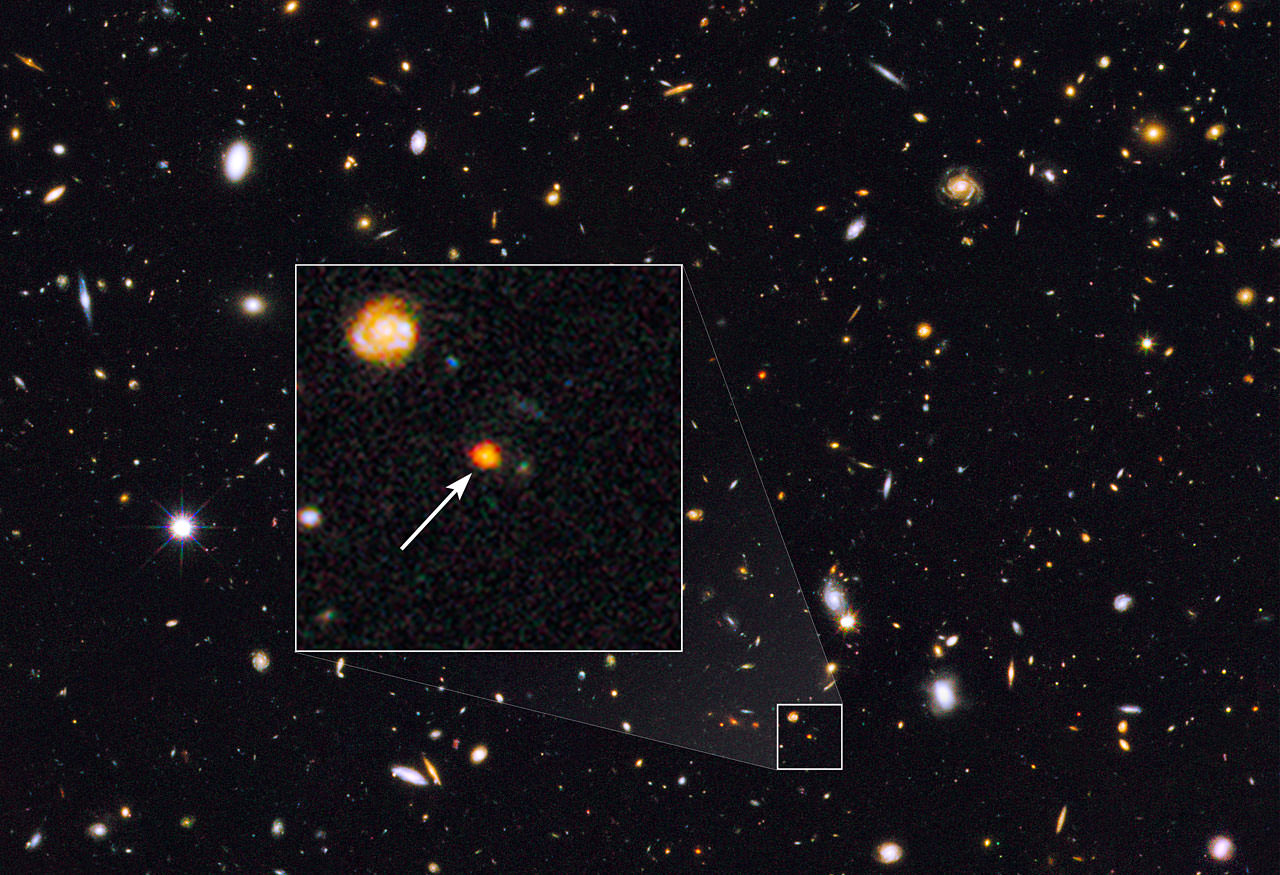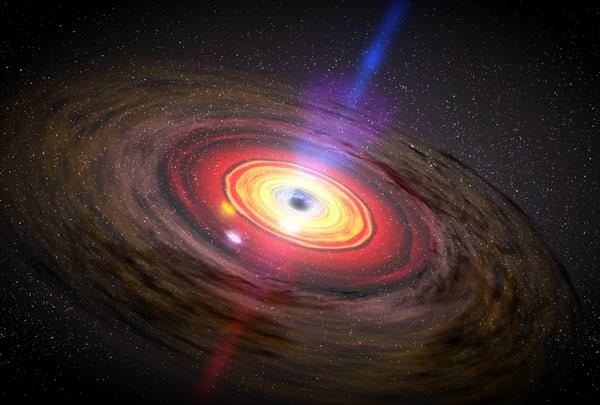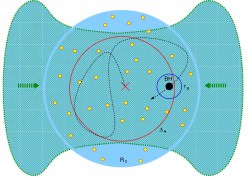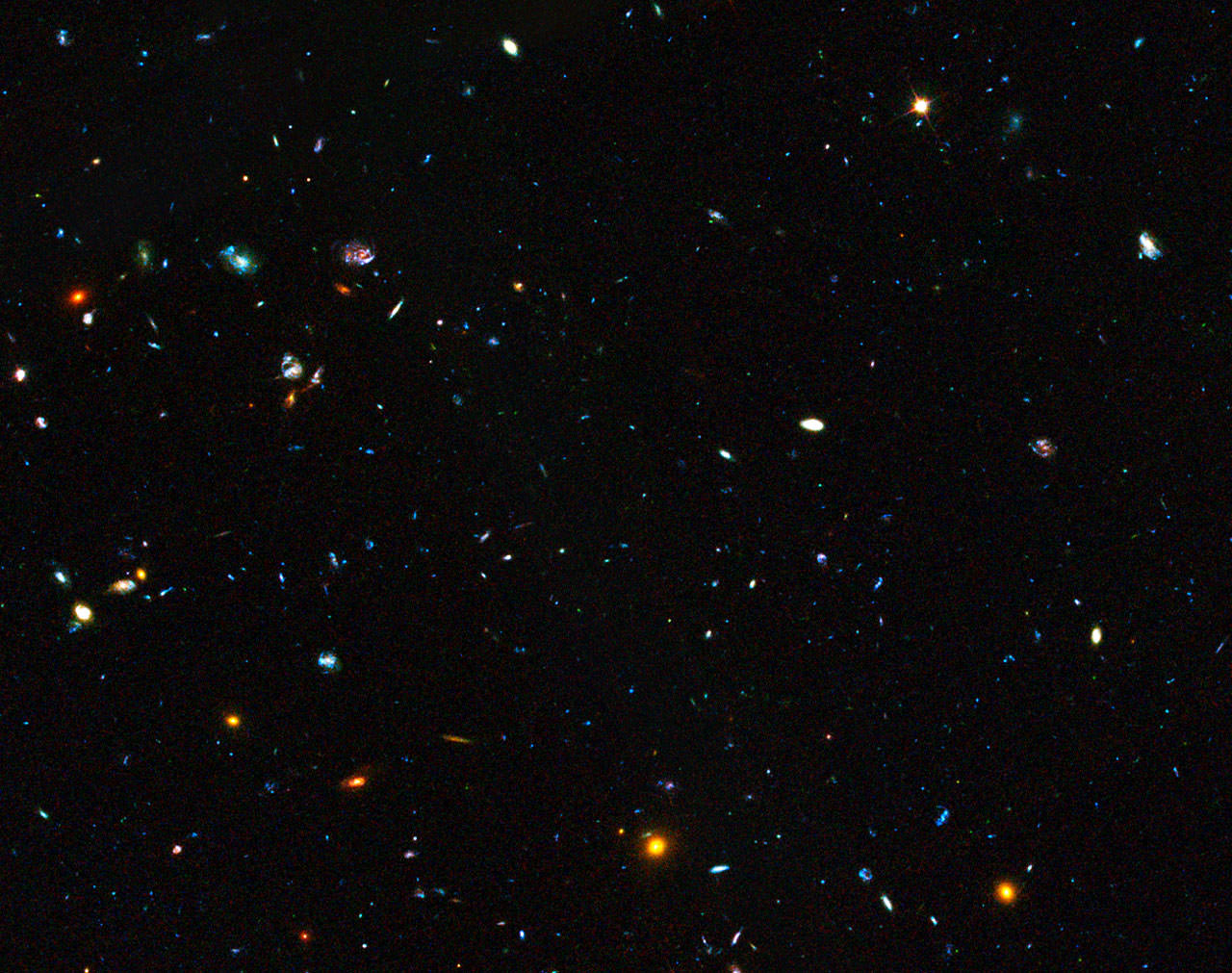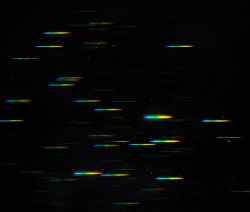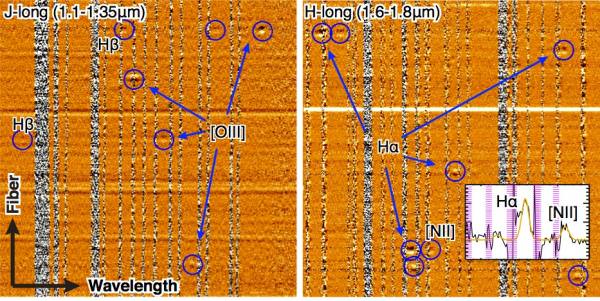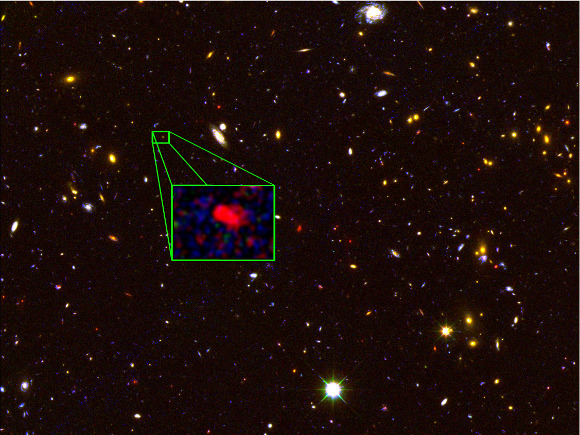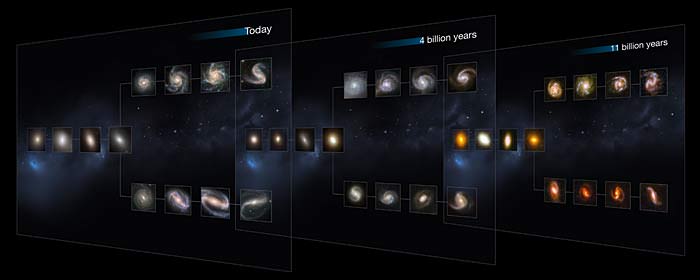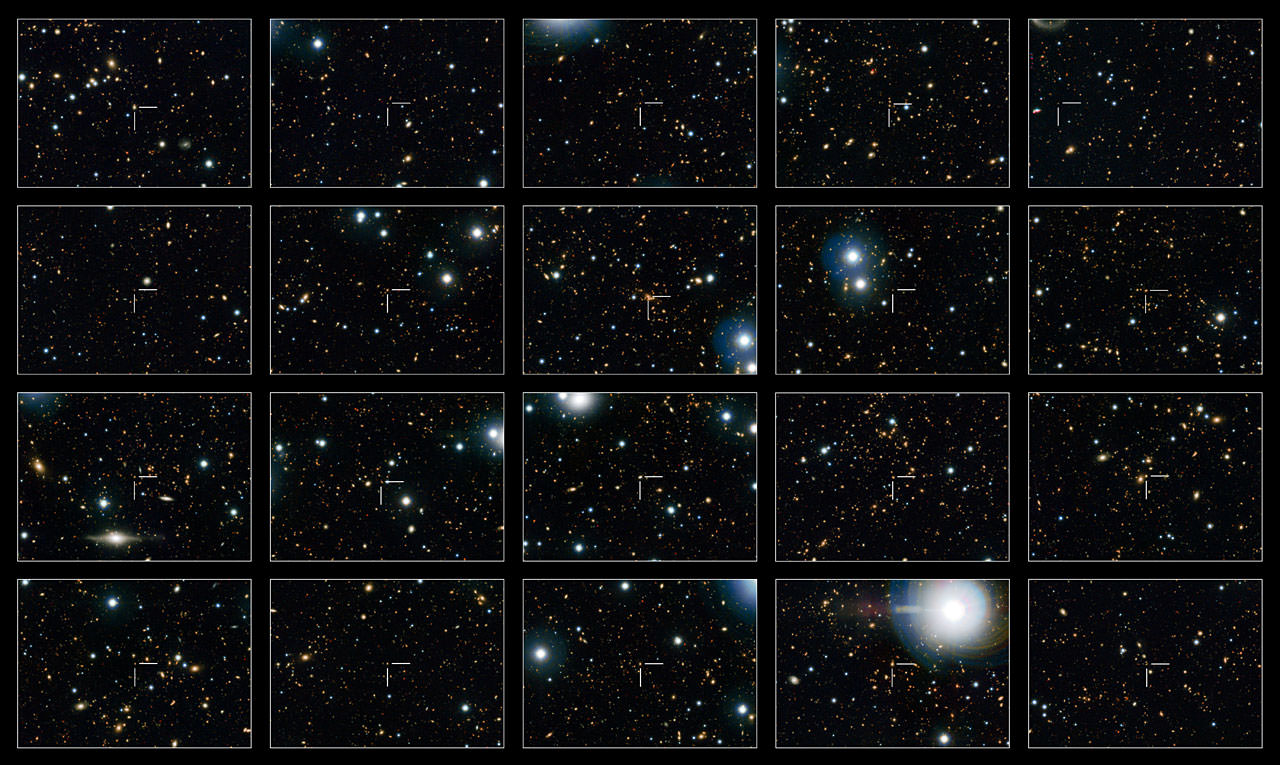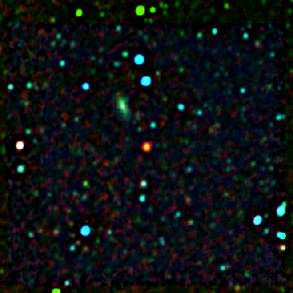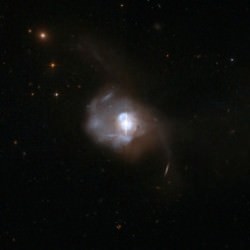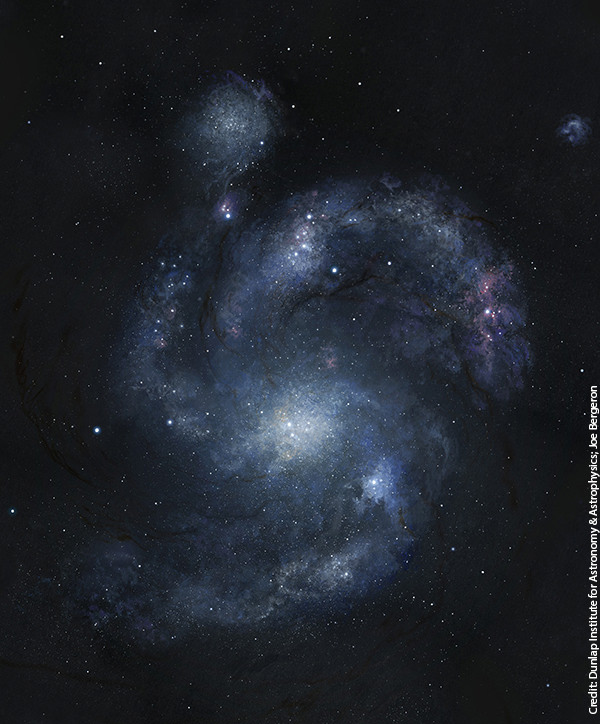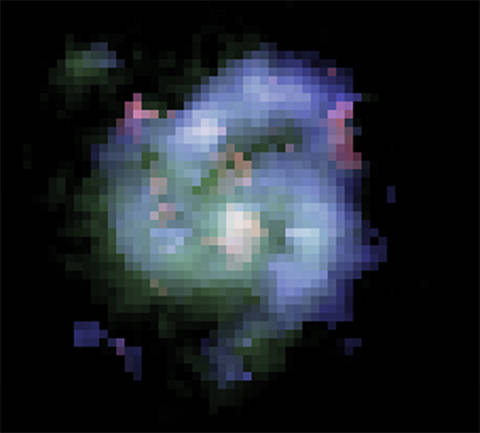Astronomers have spotted, for the first time, a dense galactic core blazing with the light of millions of newborn stars in the early universe.
The finding sheds light on how elliptical galaxies, the large, gas-poor gatherings of older stars, may have first formed in the early universe. It’s a question that has eluded astronomers for decades.
The research team first uncovered the compact galactic core, dubbed GOODS-N-774, in images from the Hubble Space Telescope. Later observations from the Spitzer Space Telescope, the Herschel Space Observatory, and the W.M. Keck Observatory helped make this a true scientific finding.
The core formed 11 billion years ago, when the universe was less than 3 billion years old. Although only a fraction of the size of the Milky Way, at that time it already contained above twice as many stars as our own galaxy.
Theoretical simulations suggest that giant elliptical galaxies form from the inside out, with a large core marking the very first stages of formation. But most searches for these forming cores have come up empty handed, making this a first observation and a phenomenal find.
“We really hadn’t seen a formation process that could create things that are this dense,” explained lead author Erica Nelson from Yale University in a press release. “We suspect that this core-formation process is a phenomenon unique to the early universe because the early universe, as a whole, was more compact. Today, the universe is so diffuse that it cannot create such objects anymore.”
Alongside determining the galaxy’s size from the Hubble images, the team dug into archived far-infrared images from Spitzer and Herschel to calculate how fast the compact galaxy is creating stars. It seems to be producing 300 stars per year, a rate 30 times greater than the Milky Way.
The frenzied star formation likely occurs because the galactic core is forming deep inside a gravitational well of dark matter. Its unusually high mass constantly pulls gas in, compressing it and sparking star formation.
But these bursts of star formation create dust, which blocks the visible light. This helps explain why astronomers haven’t seen such a distant core before, as they may have been easily missed in previous surveys.
The team thinks that shortly after the early time period we can see, the core stopped forming stars. It likely then merged with other smaller galaxies, until it transformed into a much greater galaxy, similar to the more massive and sedate elliptical galaxies we see today.
“I think our discovery settles the question of whether this mode of building galaxies actually happened or not,” said coauthor Pieter van Dokkum from Yale University. “The question now is, how often did this occur?”
The team suspects that other galactic cores are abundant, but hidden behind their own dust. Future infrared telescopes, such as the James Webb Space Telescope, should be able to find more of these early objects.
The paper was published Aug. 27 in Nature and is available online.

